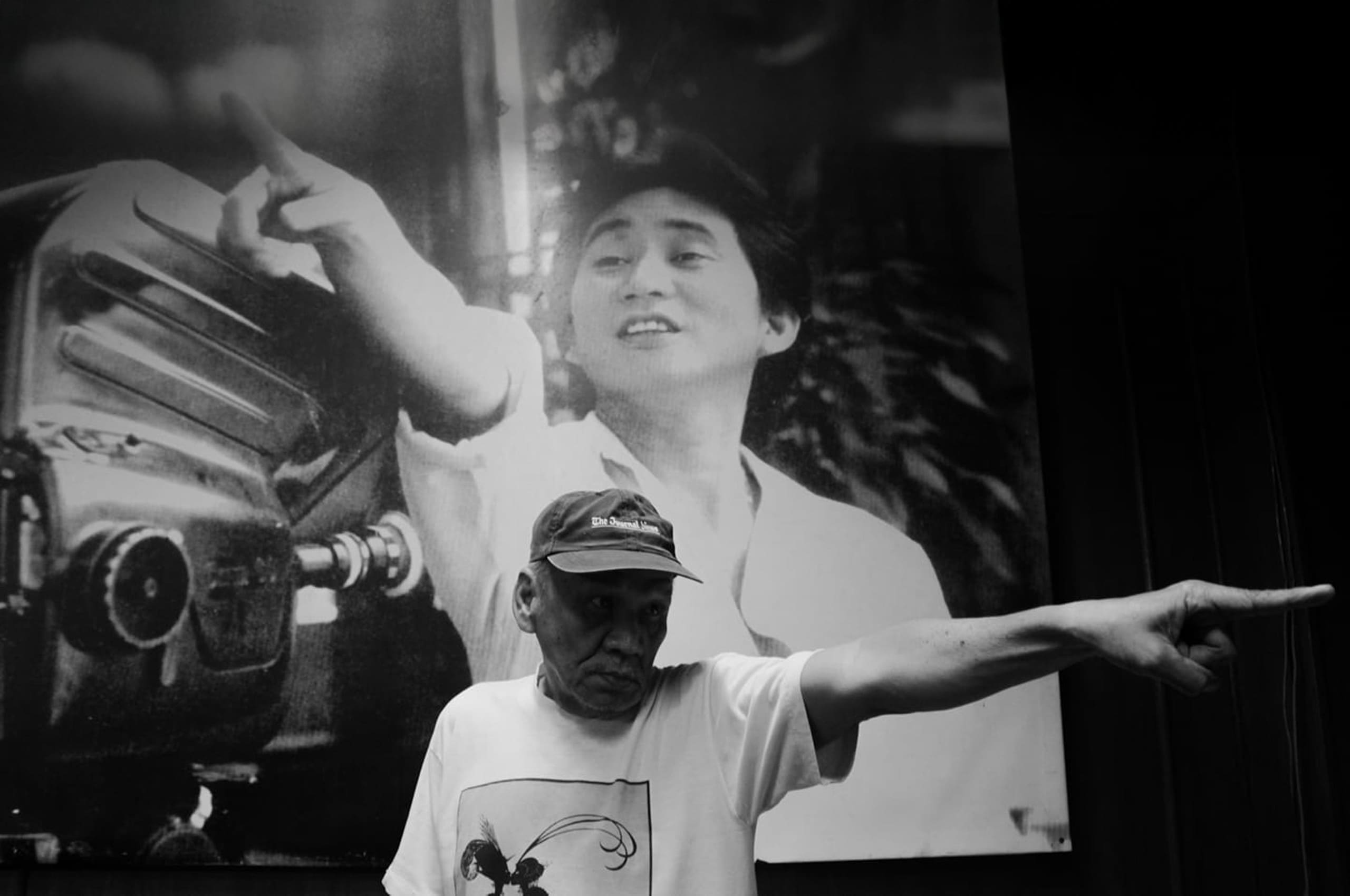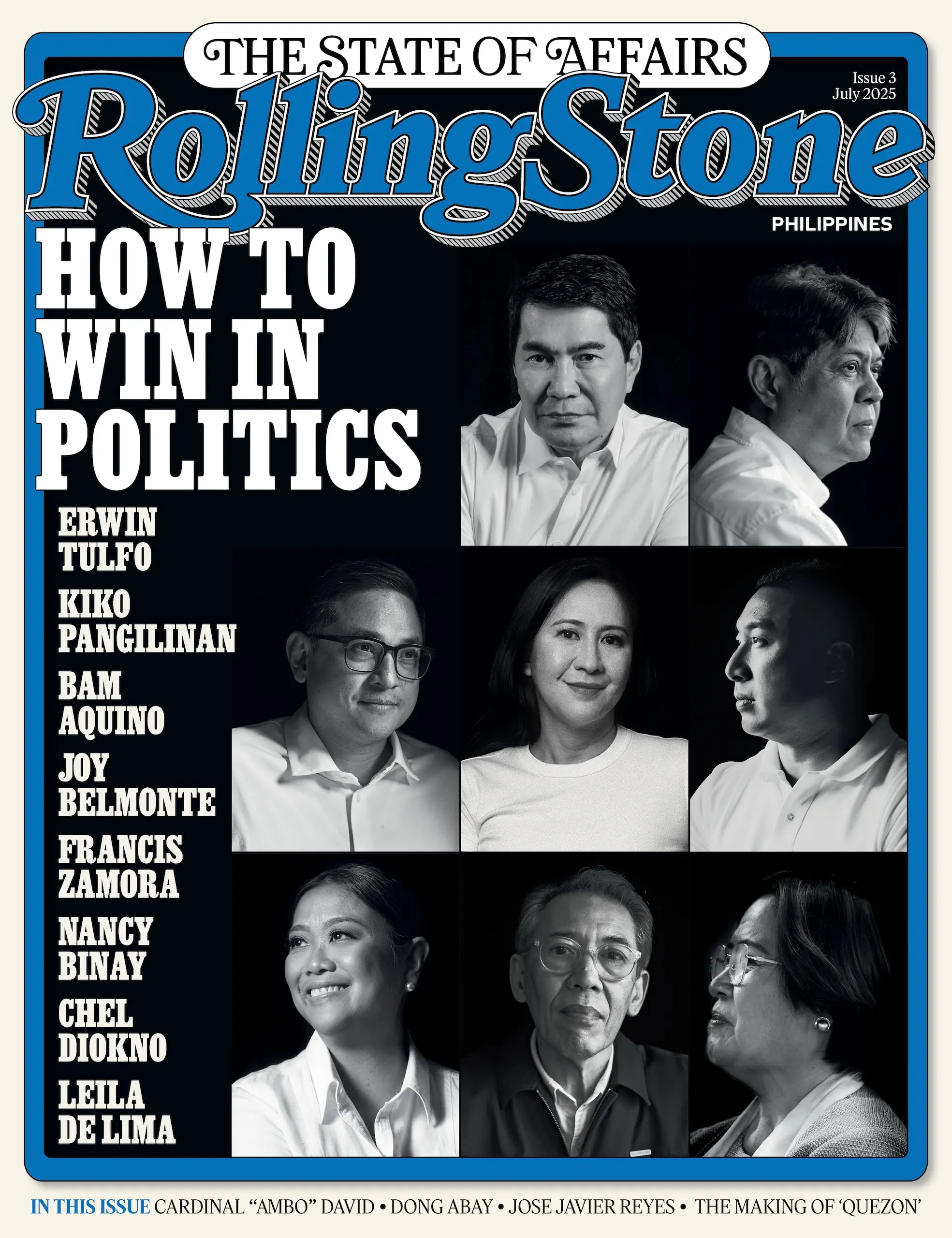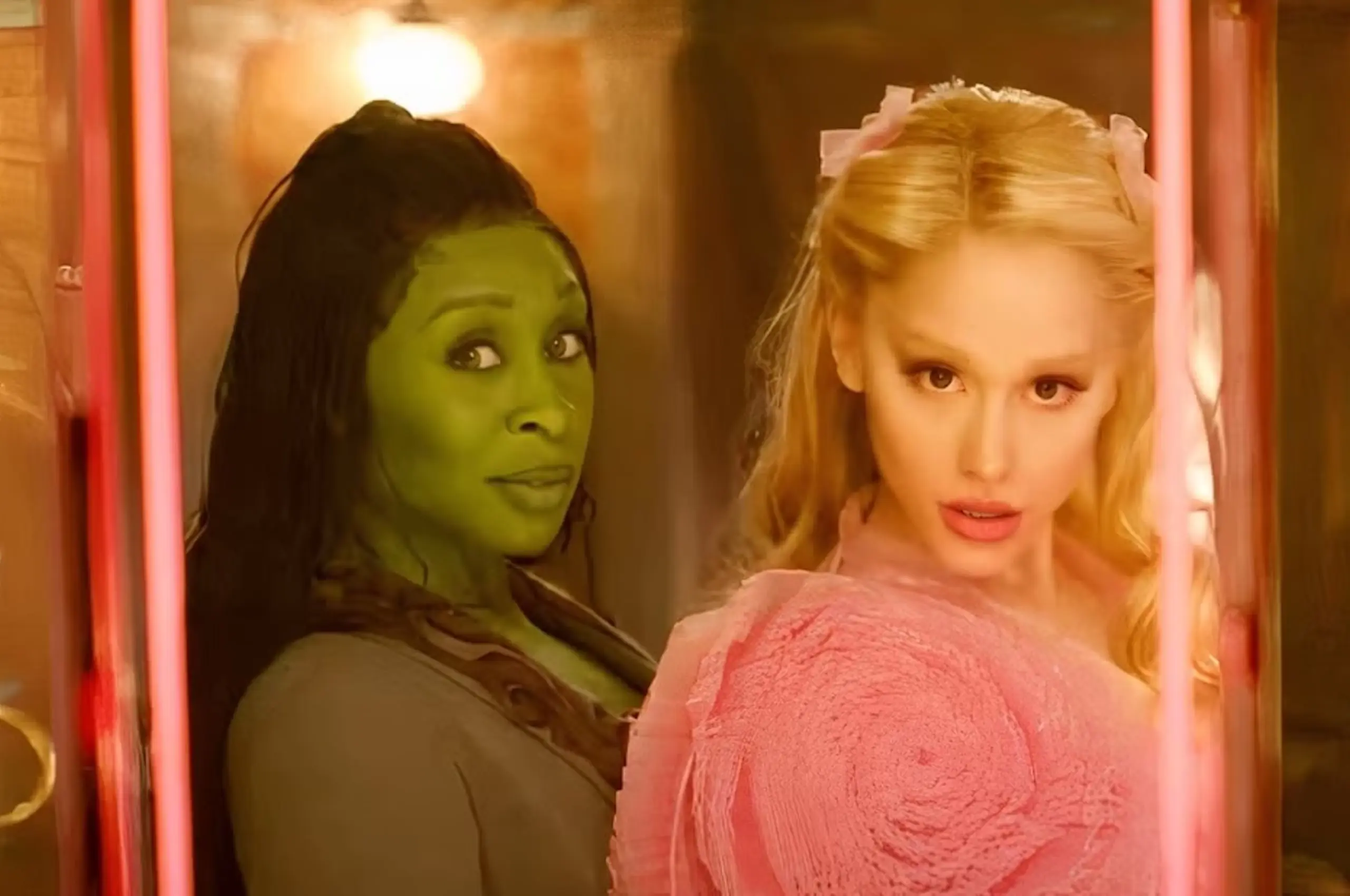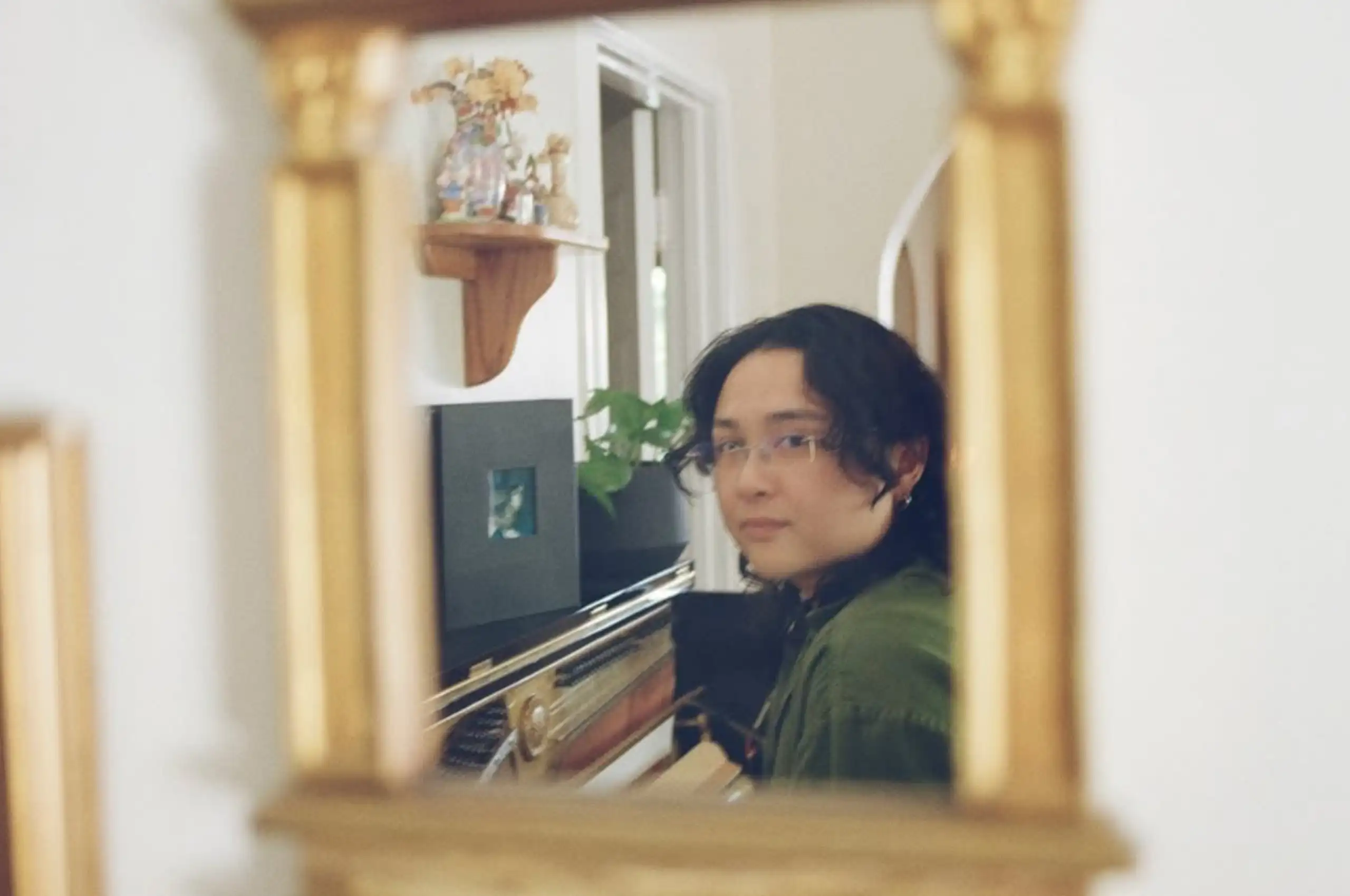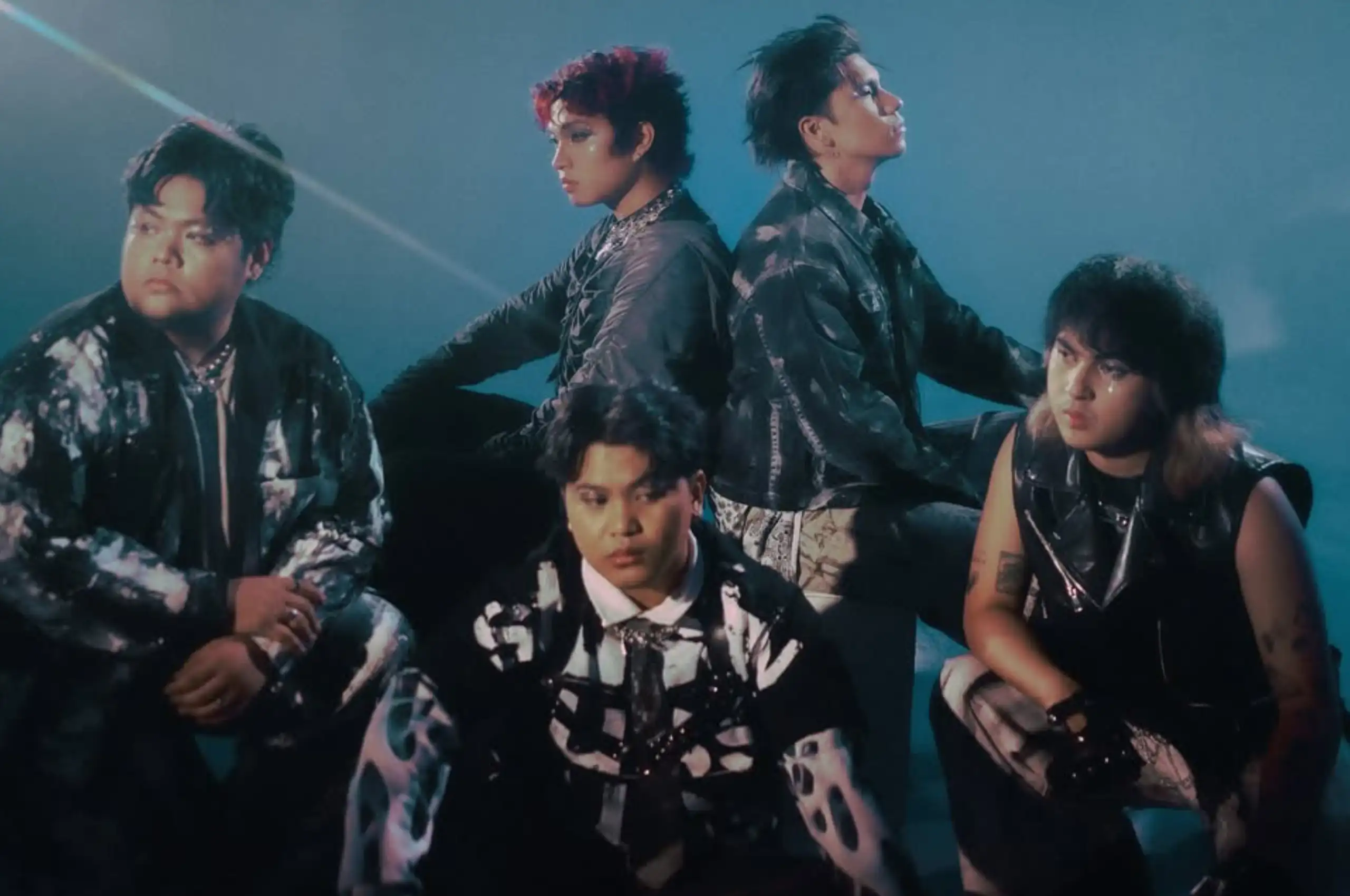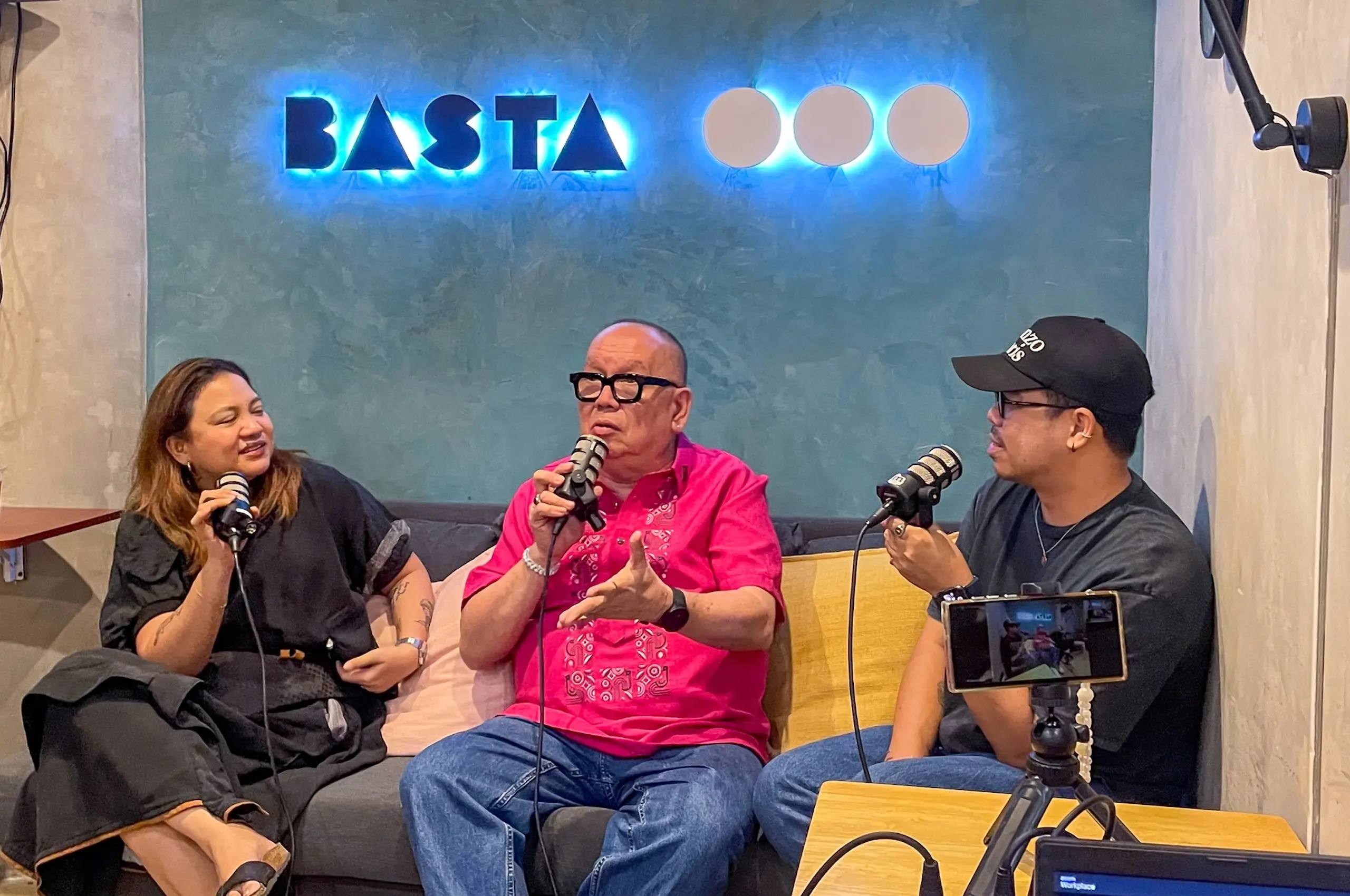In 2023, Gawad Alternatibo, the longest-running independent film competition in Asia, held its first Congress to encourage discourse on alternative filmmaking in the Philippines. Onscreen, a crowd watches an albino creature with black shoulder-length hair emerge on all fours. Percussion thrums as it crawls out of the foliage and into the sprawling concrete forest that is Manila, ending at the labyrinthine Brutalist architecture Manila Film Center at sunset. The creature crawls breathlessly until it reaches the backwaters of Manila Bay at dusk. Only a fade-out rescues it from exhaustion.
Six minutes later, the film’s director Roque Federizon Lee, known by his contemporaries as Roxlee, is called to the stage. Juan Gapang, the 1986 short film that won him and his collaborators Yeye Calderon, At Maculangan, and Joey Ayala their first Gawad Urian award, is one of Philippine alternative cinema’s most enduring pictures. Its ghostly figure has become a universally recognized symbol of struggle and persistence; one that has been replicated, repurposed, and resisted by local and international image-makers like in Hiroshi Takahashi’s 1998 picture, Ringu.
In any other room, he may seem like a typical cap-wearing, white-bearded elderly man. But at Gawad Alternatibo and many other art spaces and film festivals, Roxlee is a titan. He enters the room like Fernando Poe Jr. in Batang Quiapo; his pace quick and his footsteps heavy, a parka jacket only partly covering the shirt he designed in 1993 for a festival in Yamagata, Japan. Each filmmaker was asked to speak about their work. But before he makes it to the stairs, he drops to his knees and begins crawling.
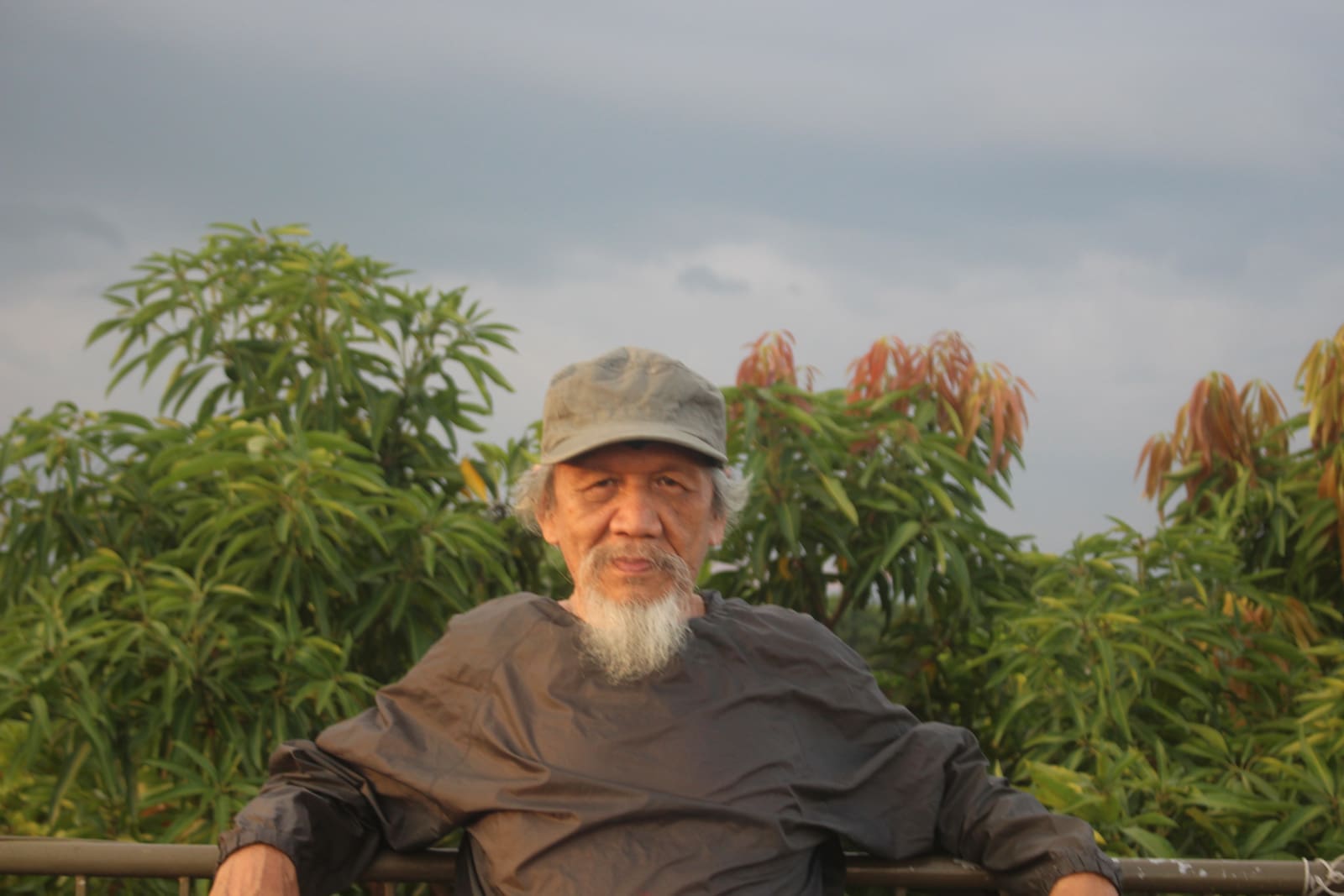
It happens so fast, the audience erupts in laughter. Applause thunders as Roxlee circles the stage like a windup toy; the cheers build until he’s back up on his two feet in front of the podium. The crowd expects a speech. Instead, he pumps a fist in the air.
“Hindi na ako makapagsalita noon kasi napagod ako. Hiningal talaga ako,” Roxlee says over the phone, laughing. “73 years old na rin ako, minsan hinihingal ako kapag biglaan.”
A world of his own
Everyone has an odd story about Roxlee — from sporadic performance art in public to sudden nudity at Christmas parties. But the myth around him easily shatters when one gets to know him in all his kind and unassuming mundanity.
Born and raised in Naga City, Bicol, his practice emerged from a weariness of drawing straight lines in his architecture course at the National University Manila. Roxlee diverged by illustrating comics for broadsheets, creating the nationally serialized comic strip Cesar Asar.
His venture into film happened later when he was in his thirties. Thrust into Mowelfund Film Institute’s workshop culture that enjoyed the privileges of financial and creative freedom, he experimented with the form alongside mentors Ingo Petzke, Christoph Janetzko, Harun Farocki, and Birger Bustorff, who were brought to Manila by the German cultural institute Goethe-Institut to challenge the studio- and star-centric narrative filmmaking that dominated the 1980s. The group insisted on developing an unconfined cinema and discovering new voices and languages in the aftermath of the mutually assured destruction promised by the Cold War and the Vietnam War.
“[Roxlee] opened up an intellectual and aesthetic [pathway]; pushed the envelope in a good, creative way. But as a man? Walang description eh. Para kang ma-sa-swallow sa mundo niya.”
Super 8mm film became popular in the budding scene of alternative cinema. It was created in the mid-1960s by The Eastman Kodak Company to address the light-sensitive film rolls, labor-intensive equipment, and storage conditions that prevented filmmaking from being more accessible to beginners. With compact cartridges and a new magnetic strip that enabled the simultaneous recording of sound in the 1970s, Super 8 became the go-to medium for the amateur hoping to become an auteur.
While the world was using Super 8 films in the 1970s to chronicle birthdays, weddings, and funerals, Roxlee and his Filipino contemporaries used it to explain state-sponsored violence and urban decay to children (ABCD), condemn national atrocities and unearth the hypocrisy of religious rituals (Tatlong A, which eventually became Lizard, or How to Perform in Front of a Reptile), and reflect the dangers of urbanization and the destruction of the environment (Mix One and Two). As Lino Brocka juggled commercial film jobs with independent, socio-realist narrative productions like Manila In The Claws Of Light and Insiang, Roxlee was creating motion pictures about similar social ills but using different methods: experimenting with expired film stock, collaging celluloid found in a film lab’s garbage can, and screening these films wherever possible.
To filmmaker, animator, and Mowelfund Institute director Ricky Orellana, the epitome of Roxlee’s dadaism is his six-and-a-half-minute 1989 film, Morons Monolog, a film lost in the early 1990s and only recently recovered, digitized, and screened at Arsenal Berlin alongside another thought-to-be-lost short Kalamay from 1988. Orellana narrates it to me like he’s watching the film in real-time: Roxlee sits while he wraps a rubber band around his head, his face contorting in pain and anguish. Simultaneously, he begins reciting a monologue that grows increasingly unintelligible.
“Tabingi ‘yong bunganga niya. Tumutulo ‘yong laway habang dine-deliver ‘yong monologue niya,” says Orellana. “Wala siyang kwento pero ang lakas ng image. Walang gagawa no’n kung ‘di alternative films lang. Doon mo lang siya talaga makikita.”
To Orellana, Roxlee’s works are “extensions of his personality,” making it unclassifiable, and exciting to archive and recontextualize for future generations. The absurd humor, unconventional use of mixed media, and biting socio-political commentary have become Roxlee’s cinematic signature of rebelliousness, even as he transitioned from Super 8 and 16mm to 35mm, and eventually digital filmmaking.
“[Now,] everyone is so narrative [even] in the alternative film scene na nawala ‘yong pilosopiya na gumawa ka ng kwento in a different way or [you’re introducing] a different way of seeing the world,” filmmaker Paolo Villaluna tells me. “Roxlee has inspired and changed the aesthetics of so many filmmakers. He opened up an intellectual and aesthetic [pathway]; pushed the envelope in a good, creative way. But as a man? Walang description eh. Para kang ma-sa-swallow sa mundo niya.”
‘Like chop suey’
When I enter Roxlee’s home in Cainta, Rizal, the first thing I notice are the walls: decorated with at least six different clocks of varying designs, all of which tell different times, with several outdated calendars. Between these temporal markers are vibrant and surreal paintings of bodies, birds, and hybrid figures. Some are his, some his brother’s, Mon, and others his son’s, Xerox. Over the phone, Lot Arboleda, Roxlee’s producer, editor, and wife, joked that their house looked like “a junkyard” from the outside. But in many ways, this place, where lines between living and artmaking, clutter and creation, are impossible to delineate, is emblematic of Roxlee.
I arrive for a one-on-one interview with Roxlee, half-expecting he’ll hand me a flash drive of his older work I struggled to find online. Instead, I see several boxes of pizza, a few bottles of Coke Zero, and Roxlee’s cinematographers and long-time collaborators Jippy Pascua and Albert Banzon setting up a screen for a film viewing of Tamgohoy, his latest film. I cancel the rest of my day. To Arboleda, this spontaneity is part of her life with Roxlee. “Hindi ko nga alam na producer ako,” she says with a laugh while tinkering with the projector and loading their first cut. “Nagulat na lang ako noong may pitching daw.”
Tamgohoy is a fictionalized meeting between two historic Boholano figures whose revolts shaped the region during the Spanish era: Tamblot (Ronnie Lazaro), a babaylan who rose against Spanish powers attempting to erase Indigenous religions, and Dagohoy (Rafael Bulan Luna), whose rebellion stemmed from issues of labor and the refusal of Jesuit priests to give his brother a proper burial.
Initially set to be shot on Super 8 with a larger production on-location, budget limitations and other unexpected constraints forced the film into a state of restraint. Partly done in Wawa Island and Roxlee’s backyard, the guerilla-style shoot used minimal resources and utilized lush greenery and natural lighting. In the absence of a score, Roxlee strums a guitar as he discusses edits and color grading with his team, joking about graffiti on the rocks near the river that must be concealed. When the dialogue becomes barely audible, Roxlee intervenes by dubbing with sound effects, concluding the film with a live performance of his new song for the film, “Alitaptap.”
“‘Yong mga una kong ginawa, ‘yong experimental, biglang may papasok na ganito o biglang may hindi ka maintindihan, [ay] parang chop suey,” says Roxlee. “Pero itong Tamgohoy, parang ordinary na may script, may character. Smooth flowing. Standard filmmaking.”
As the Tamgohoy reel rolls, I notice a colorful makeshift animation box in the corner of the room. Roxlee says it is another one of his options for filming. I suddenly remember that he is one of the few recipients of three different Lifetime Achievement Awards from the Filipino Academy of Movie Arts and Sciences, Gaward Urian, and Animahenasyon, an animation festival he was a founding member of in 1995 until it was ceded to the Animation Council of the Philippines Inc. in 2007. I ask him where his trophies are and he points everywhere: They’re not kept in a special cabinet but instead swim in nearly every corner of their home, indistinguishable from the books, art materials, sculptures, and clutter that fill the space.
He doesn’t require much to create beautiful, extraordinary, and even ugly things. There’s no requirement for him to perform. To just focus on one area of what he does is to miss the entire point.
He grabs one and shows it to me, noting how his name is only taped to its surface. The award-giving body didn’t have the budget or time to have it engraved. Instead of taking offense, he was happily amused. He returns it to its place and brings out an old Super 8 camera that’s in better condition than the awards.
He shows me how to operate it in his living room, pointing to where the film would be loaded. It’s the same Super 8 camera he used to create The Great Smoke, his 1984 animated short satirizing nuclear war, which he made in his garage with a pen and sketchbook on a small chair. It’s also the same camera he used in Film Toque, a film and cooking show created with film directors Teddy Co and Tado that depicts an improvised attempt at explaining how pre-digital film production goes. To Roxlee, these materials and moments captured using this camera seem to carry more weight than any other accolade.
The rise and fall of Super 8
Up until the 1990s, Super 8 was commonplace in the Philippines because it was affordable, lightweight, and simple technology. But it wasn’t always going to be this way. In November 2023, a forum in the Ateneo Art Gallery discussed the influence of the Super 8 camera with filmmaker Raymond Red and film historian Nick Deocampo. When Clarissa Chikiamco, curator of the National Gallery Singapore, asks the panelists when the decline of Super 8 in the Philippines began, Red and Deocampo adjust in their seats. “We were running away from the colonization of Hollywood but we could not run away from the capitalist dependency,” says Deocampo. “The Philippines does not manufacture Super 8, so we became dependent — but not in our creativity, at least I’d like to think.”
Referring to his 1983 film Oliver, Deocampo says he had to wait nearly a month until he saw his batch of reels. “So, how do I shoot my next one? I’m looking for continuity… You’re going to see a film that was imperfect… Napakahirap ng mode of production.” The local Kodak processing facility Deocampo tried negotiating with ended up closing. Its laboratory equipment was gifted to the Mowelfund Institute but no one could operate it. The machines were later sold in parts, if not left rusting at the facility.
“We tried to protest,” says Deocampo. “But by the ‘90s, it was all over.”
Deocampo sees Roxlee arrive from outside and, as soon as he sits down to join the panel, he immediately begins to praise him. “Roxlee was the most impulsive, the raw energy he was. Nihilism was the aesthetics and the language,” says Deocampo. “A raw language? This is Roxlee. A language that is primeval, brave, and courageous… You begin to ask yourself: ‘Is that even a language?’”
Taken aback, Roxlee stares blankly then diffuses the praise with jokes, which gets the audience chuckling before he gets into the ultrafine details of their Super 8 self-processing efforts in the absence of institutional assistance.
Erwin Romulo, a long-time collaborator of Roxlee and one of the composers behind Tamgohoy, moderates the discussion between the three stalwarts. Romulo has been one of Roxlee’s most steady champions alongside actor, filmmaker, and co-curator Jun Sabayton. In a review of Roxlee’s 2000 album Ghost of Rocker Janis, Romulo called him the “sari-sari store surrealist,” and nearly two-and-a-half decades since that release, he doubles down on this description, likening him to surrealist artist Salvador Dalí, Spanish-Mexican filmmaker Luis Buñuel, and their contemporaries.
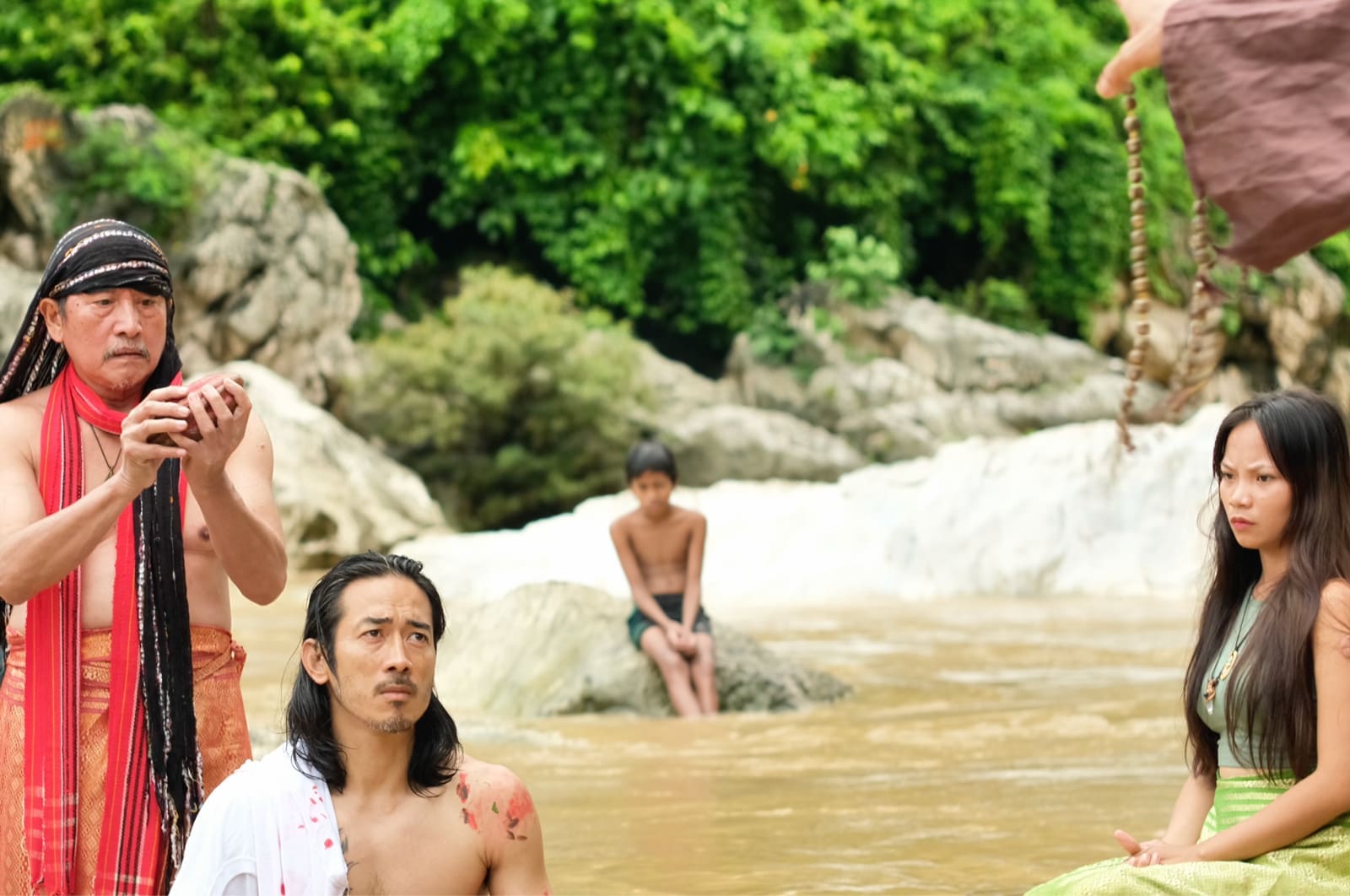
“Rox is a better model for Filipino filmmakers because it’s a much more approachable example,” says Romulo. “His entire life has been art. He doesn’t require much to create beautiful, extraordinary, and even ugly things. There’s no requirement for him to perform. To just focus on one area of what he does is to miss the entire point.”
Auteur-centered film culture has glorified the likes of Stanley Kubrick and Alfred Hitchcock for their seemingly singular visions. Their mode of production relied heavily on preserving the status quo, at times using their creative license as leverage to justify abuse. In a landscape where films are created by committee or killed by algorithm-led decision-making, Romulo posits that Roxlee’s filmmaking offers an alternative cinema that is liberating in its message but also in its form, production, and distribution. One need not pay a streaming giant for Roxlee’s films. One could go to a free gallery space in the Philippines or even YouTube, Instagram, and Facebook.
“Cinema was so prohibitive before. There was no choice. But now, the cost of production is affordable,” says Romulo. “Roxlee proved back then that you didn’t need a budget to create great works of cinema. You just needed imagination and the freedom to pursue it.” Despite this, a longing for the analog has only grown through the years. It is visible in the uptick of physical media purchases amidst the domination of streaming platforms, and in the growing number of filmmakers who advocate shooting on film and screening films on print for audiences. Even Roxlee himself yearns to film anything on Super 8 if given the chance.
Experimenting and Endurance
In recent years, filmmakers have had more opportunities to incubate their ideas at labs, sell their work at production markets, seek co-producers from international players, and submit local and international grants for film development. While these have emphasized creative and cross-cultural collaboration, empowered auteur-driven voices, and enabled projects to gestate for longer periods of time, such additional steps also run the risk of diluting filmmakers’ visions, homogenizing narratives based on Western forms, aesthetics, and principles. It also creates higher barriers to access for filmmakers, who neither have the network nor the capital to travel to these events.
Roxlee’s creative pursuits are independent even from the independent scene. He abides by his own “12 commandments” for independent filmmakers. His almost annual workshops on experimental film and animation for children require minimal financial investment, if not conducted wholly for free. Like his The Brockas bandmates Lav Diaz and Khavn, two other Filipino filmmakers in the international arthouse scene, Roxlee often creates films with a small group of friends, many of whom he started collaborating with before the turn of the century, which makes it possible to trace which hands shaped each frame of his work.
A raw language? This is Roxlee. A language that is primeval, brave, and courageous… You begin to ask yourself: ‘Is that even a language?’
“There’s a palpable DIY-quality to his films and that makes it feel like filmmaking is something me and my friends could do,” says film critic and video essayist Red Sales, who served as one of the panelists for film criticism at the Gawad Alternatibo Congress and whose video essay on Juan Gapang reintroduced a new generation to the Roxlee’s works. “It feels like playing around, like when you’re doodling at the back of the classroom. The spirit of playful experimentation is embodied by him.”
In a later conversation, Sales points out that of the many mentioned in the late film critic Alexis Tioseco’s iconic love letter to Philippine cinema, only his dream for Roxlee — to get the money to create a feature-length animated film Planet of the Noses — remains ungranted. It’s easy to make the mistake of blaming these on artistic decline. But for an artist as prolific and engaging as Roxlee, it’s clear that the barriers are more structural than personal. While the country is one of the largest outsourcing hubs for animators globally, local animated work is garishly underfunded, with only a handful of animated features receiving funding through international co-productions and some even trapped in development hell.
A week after the forum, Tamgohoy premiered at the QCinema International Film Festival to polarized responses. Maybe the audience expected something closer to Manila Scream Expanded, Roxlee’s 2017 omnibus work that imagines Edvard Munch’s 1893 expressionist painting as a response to the chaos of Manila. But a handful of filmmakers and critics, including Binisaya festival director and Cebuano filmmaker Keith Deligero, championed Tamgohoy, arguing that its deviation from many of the typical Roxlee signatures is in the true spirit of the iconoclast’s filmography. Sure, it does not contain the same gruesome imagery and cruel irony of his earlier work, focusing more on the folk healing practices than the bloodiness of the revolt that (superficially) tethers Tamblot and Dagohoy. But why should a filmmaker with four decades under his belt be expected to create the same works as he did in his youth?
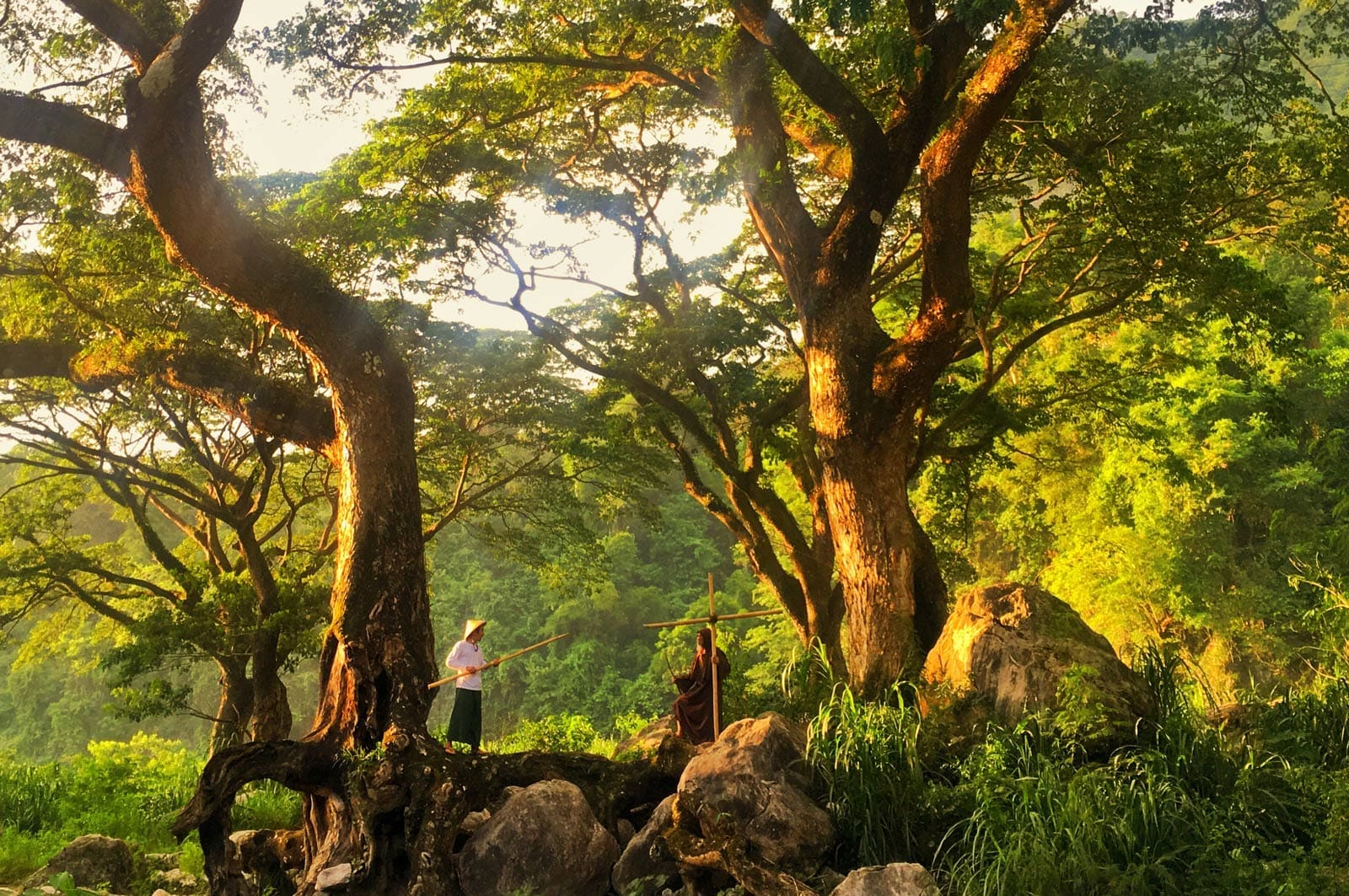
Filmmaker Kaj Palanca sums it up well in his QCinema dispatch as one of its Critics Lab fellows. He said that Tamgohoy is “training us to pay respects to the centuries of established practice that precede our ideas of revolution,” later arguing that “the film reckons with history far more properly than any blockbuster movie of our time.”
I ask Roxlee if having children had anything to do with his filmmaking having changed. “Nagiging wholesome na yata ako,” Roxlee laughs. “Siguro that time [in the 1980s], iba rin ‘yong perspective ko. Gusto ko lang maging expressive. Noong nagka-pamilya ako, hindi na masyadong violent. Pero minsan, gusto ko pa rin gumawa ng medyo experimental.”
Sentimentality is not Roxlee’s strong suit. When his film reels were submerged during Typhoon Ondoy, he let them float. When film festivals and restoration facilities displaced the only remaining copies of his films, he expressed no regret or rage. When film programmers in Yamagata recovered one of his rare titles, he cut up portions of these film strips and distributed them to bystanders, insisting them to “make art, not war.” Such abandon has allowed him to keep evolving in his formal and thematic explorations but it is his generosity and willpower that are key to his persistence and longevity, even when this hasn’t guaranteed him the artistic license and financial stability expected of someone as prolific. But these remain secondary to him.
“Hindi talaga maalis ‘yon kasi may mga ideas ka na kung hindi mo ilalabas, pampabigat lang ng ulo. [Filmmaking] keeps me young. Working with people keeps me going,” says Roxlee. “Nandiyan pa naman ‘yong mga kasama, ‘yong mga kaibigan. Nag-e-enjoy akong gumawa ng films.” Now, other things count as bigger accomplishments: “Wala akong maintenance! Pasalamat na lang,” he says, laughing. “‘Yon na lang ‘yong laban ko sa pagiging independent filmmaker: ‘yong endurance.”
